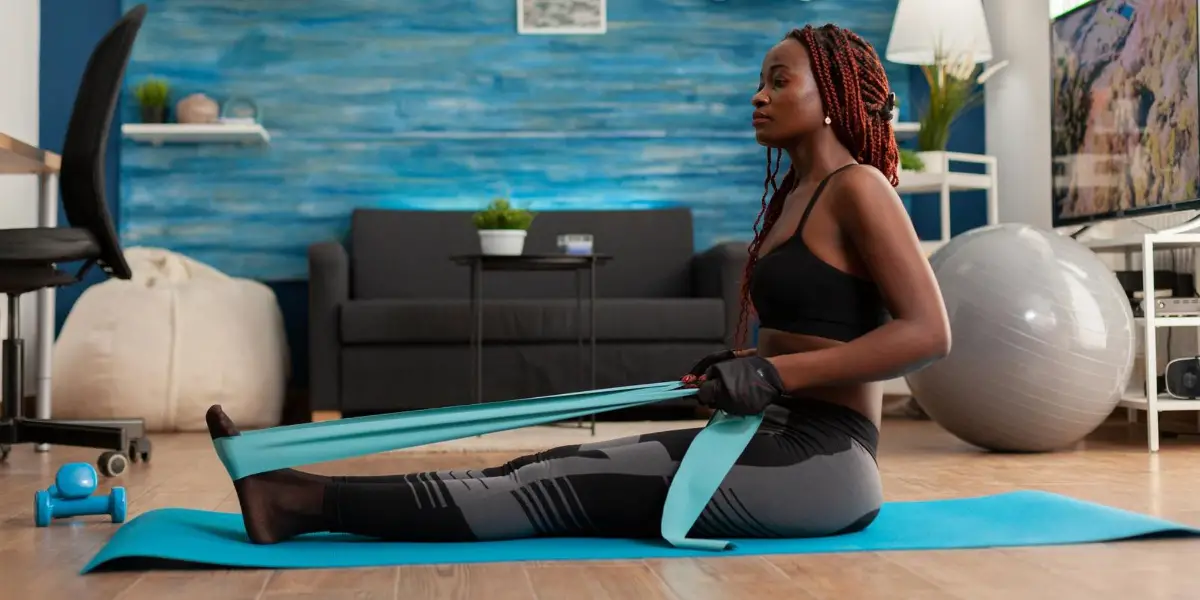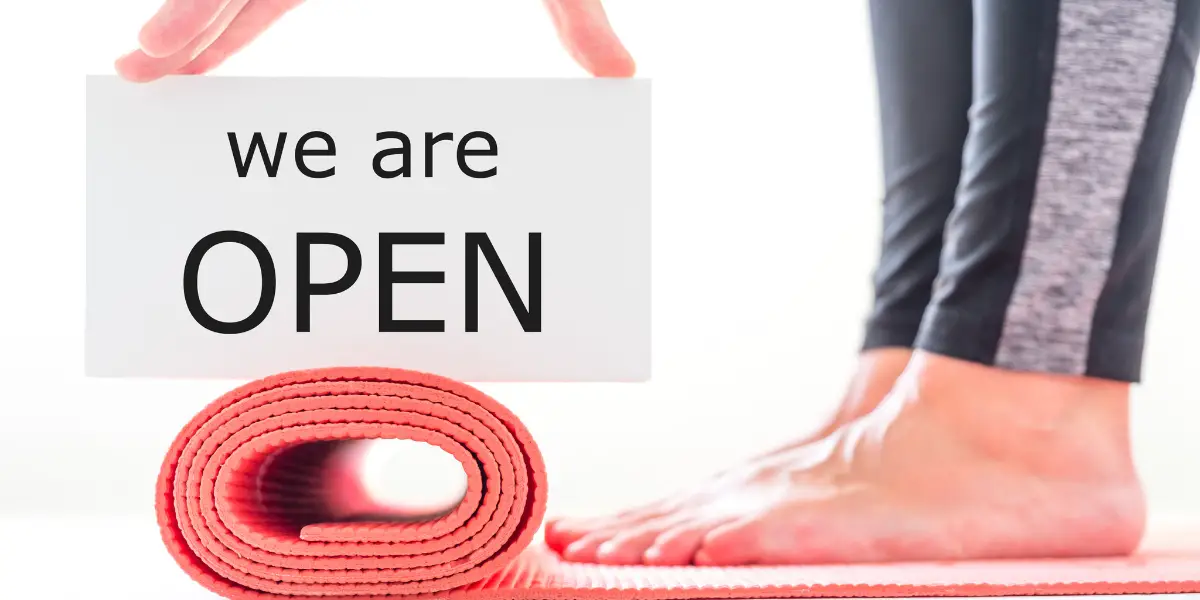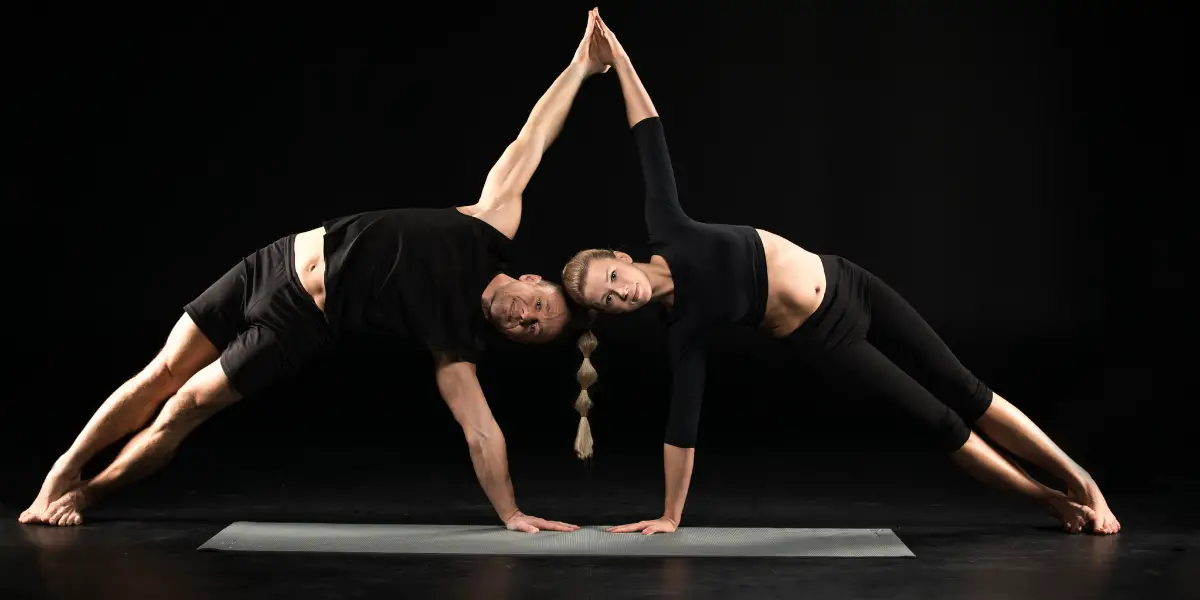Pilates is a great workout for toning and strengthening muscles. If you want to get started, you’ll need some basic equipment. What should you look out for before buying?
There isn’t much equipment needed for practising Pilates at home, all you really need is an exercise mat, suitable form fitting clothing and space for your workout. As you develop an understanding of Pilates, you may wish to add additional equipment such as hand weights, resistance bands or even a Pilates Reformer.
You’ve decided to give Pilates a try at home. You’re pumped! And you’ve also got a lot of questions: How much equipment do I need? Which Pilates tools should I invest in? What is the best way to teach Pilates at home? We’ll help you with these and more with our quick guide to choosing the right equipment for your home practice.
Basics for your home studio setup
Before investing in any equipment let’s make sure you’ve got an area to work out in. Fortunately Pilates doesn’t require a lot of space, the amount you need depends on the type of exercise you want to do. For example, if you want to do a plank, you’ll need enough room to lie down flat without touching anything around you.
Generally speaking you don’t need a huge amount of space, so even a small room will be suitable. As long as you can place a mat on the floor and have space around the mat for reaching past the mat you’ll be fine.
If you plan on creating a dedicated space, consider the following requirements:
- Is there space for a screen? This could be a TV, laptop or tablet, something connected to the internet that will give you access to online classes.
- Is there space for storage? As you progress, you will likely invest in equipment such as resistance bands and hand weights, do you have somewhere to store these when not in use?
- Is there access to natural light and fresh air? A room wtih big windows or doors to let in lots of natural light and which can be opened (weather permitting!) to allow fresh air in can enhance your workout.
The great thing about Pilates is it can be done almost anywhere. I’ve practised it in my home studio, in a small office, and even on the coast!
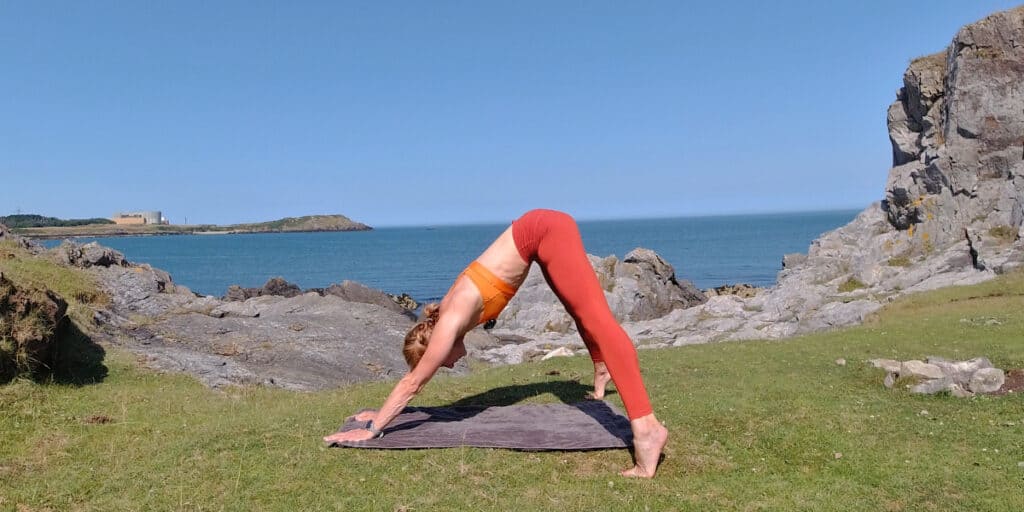
What equipment is needed for Pilates at home?
A basic set of tools will allow you to achieve great results at home. The most important thing is to find something that works for you.
At minimum, you will need a Pilates mat and suitable clothing, ideally form fitting to prevent accidents.
By suitable clothing I mean clothing that won’t get in the way of your workout, or end up gettting tangled in your hair or on equipment. For a full rundown see: What are the best clothes for Pilates?
Although it’s usually called ‘mat Pilates’ you can do Pilates without a mat, as I discuss in this article: Can you do Pilates on carpet? Is it safe?
However, as they’re not very expensive I would always recommend using one to give proper support to your joints and prevent accidental falling and injuries due to worn carpets or unsecured rugs.
A mat and your body are really the only things you need to get started. A Pilates workout uses your own body weight to add resistance to moves, you’ll be surprised just how challenging they can be!
You don’t need to invest in speciality Pilates equipment to begin with, working out using your own body will still lead to improved core strength, better flexility and mobility and more energy.
But what if you want to add a new piece of equipment to mix things up and provide an additional challenge?
Let’s take a look at some recommendations for home use. Keep in mind a lot of these can be tried out at a Pilates studio, it’s a good idea to try different types of equipment and receive a professional exercise guide in how to use them correctly.
A chair
Not a specialised fancy chair, just an ordinary chair you likely already have at home. A chair can be an incredibly useful prop to use during your workout.
You will need a sturdy chair, one without wheels (so more likely a kitchen chair than a desk chair), and it should be placed on your Pilates mat or a carpeted room to hold your chair in place.
You’re then able to do a full body workout focusing on shoulders and upper body, core control and hip mobility.
Wondering what I mean? Give this workout a try, I think you’ll be surprised by how much it will challenge you in a short space of time.
A Pilates bar
I’ve only recently discovered the Pilates bar but so far I’m loving it. A Pilates bar is a bar with resistance bands on that you anchor to the floor using your feet. These bands provide extra resistance during certain moves.
These are usually not very expensive and can be found on Amazon, usually pitched as a ‘multi gym’. You can read more about them in this post: Are Pilates bars any good? What you need to know
Or check try this workout I’ve done using one:
Resistance band
If you’re not ready to give the Pilates bar a try, consider incorporating resistance bands into your exercise routine. These require less storage space and are essentially as large elastic bands of differing resistance levels. They work similarly to the bar, providing extra resistance to your Pilates movements.
Resistance bands come in different sizes and strengths I’d suggest getting a few bands of differing strengths (you can often purchase them in a multipack) as this will give you a way to continually progress and challenge yourself.
I would suggest leaving the resistance band to one side until you’re familiar with the basic moves, but when you’re ready they’re really easy to incorporate into your Pilates routine:
Small ball
When I say small ball, I don’t mean golf ball or ping pong ball sized! The small ball I use is an inflatable one a similar size to a swiss ball. They’re deliberately partially deflated to allow them to flex under movement.
A small ball can help provide support during the routine and are a very useful way to ensure you’re practising the correct form.
I’ve often used them with clients in Pilates classes and they’re always surprised just how effective they are. Ready to give one a try? Grab your ball and try these Pilates exercises with your ball:
Stability ball
Of all the pieces of equipment clients tell me they already have, the stability ball is usually one they’ve tried at some point. These large, inflatable, balls aren’t specifically made for Pilates, in fact people of all fitness levels have likely come across these either in some sort of workout or as a chair replacement (they’re brilliant at forcing you to maintain correct posture when sitting).
They can add a really different spin to your usual workout and they really up the challenge of exercises you thought you’d mastered, testing your core stability and often resulting in your entire body shaking as you attempt to maintain a plank position while on the stablity ball.
Hand Weights
Don’t worry, I’m not suggesting you add huge, heavy, weights to your practise. Instead, I make use of small hand weights (top tip, if you’re unsure about buying weights, try the following workout with food tins) to increase the amount of work my muscles have to do.
Add these to classic mat exercises where you don’t always benefit from the use of body weight, for example moves that require you to lie on your back.
You’ll gain an increased body awareness when your arms are attempting to hold up small hand weights for a long period of time!
Sliders
Sometimes adding a simple prop like sliders to your Pilates workout can really increase the challenge and fun.
Sliders, also known as floor gliders, are small circular pads that slide/glide on the floor as you work out.
They are best used on a non-carpeted floor as they need to slide under pressure from your feet. You can also try old bits of carpet, small towels or dusters instead, placing one under each foot. Always use two of the same items, don’t mix and match a towel with a duster as its likely one will be better at sliding than the other.
As with the introduction of other equipment, I highly recommend becoming familiar with basic exercises before introducing sliders. You need to be aware of your body, it’s movements, flexility and range of motion.
High End Pilates Equipment
All the equipment mentioned above can be picked up for a very reasonable price and as you look around you will likely find lots of other options available to you.
More advanced equipment is often found in Pilates gyms and studios, generally that’s where you should use it, under professional supervision.
Pilates Reformer
The Pilates Reformer has evolved from the very early concepts created by Joseph Pilates. During his time caring for veterans he aimed to develop a way they could exercise while in bed. Brilliant Joseph Pilates made use of the bed frame itself, attaching springs to allow patients to work and tone muscles.
It’s come a long way since the original bed prototype, but it still retains the bed shape.
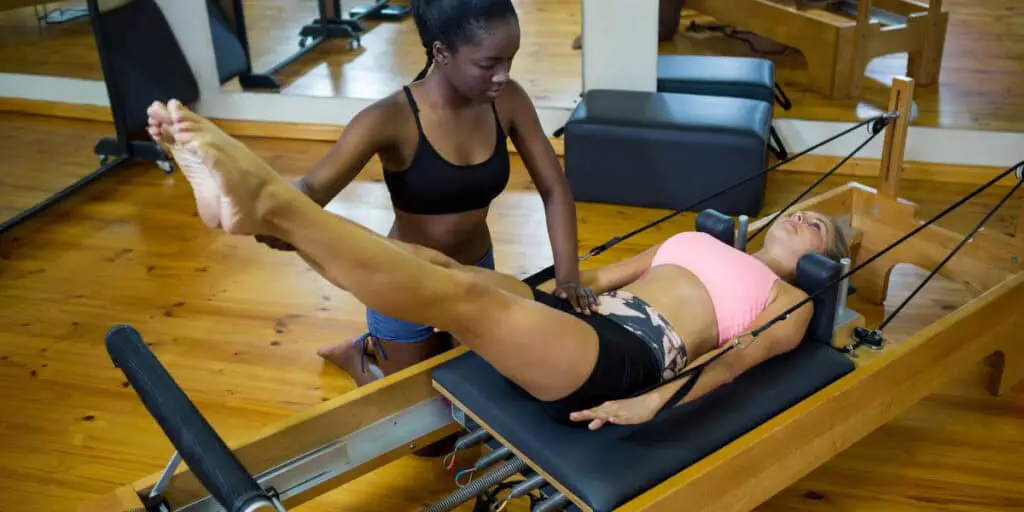
Reformers are very expensive, especially when compared to everything else on this list, and very large. Therefore, unless you’re a Pilates instructor, a studio, or someone who has integrated and loves Pilates so much they have a large dedicated space you’re unlikely to want to invest in one.
Fortunately, access to them has become a lot easier, check with your local studios and gyms and you will likely find a Reformer class (group class or one to one) is available.
Pilates Chair
A man of innovation, Joseph Pilates went on to create the ‘Wunda Chair’ in 1945. Ahead of his time, he had spotted a gap in the market and wanted to design a functional home gym piece of equipment, functional because it could be converted into a useable chair!
The modern take is now a dedicated piece of equipment for your workouts and the lower price and size makes it far more attainable than a Reformer.
As with the Reformer, the chair makes use of springs to create resistance for you to work against and the pedal moves in an arc to challenge your balance and stability.
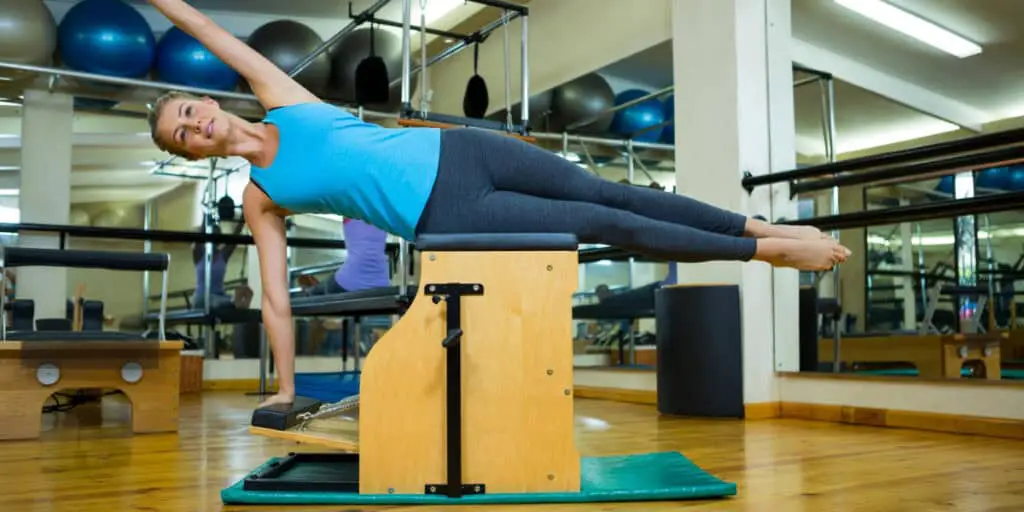
The key to using any type of equipment is to ensure you’re familiar with the proper form before including it in your routine.
Not using workout equipment doesn’t mean you won’t see results, far from it you will still work your core muscles and improve you flexility and mobility.
I hope you find my work-out videos useful in your journey, don’t feel you need to invest in equipment all at once, try to test them out at a class first and figure out which ones work best for you.

